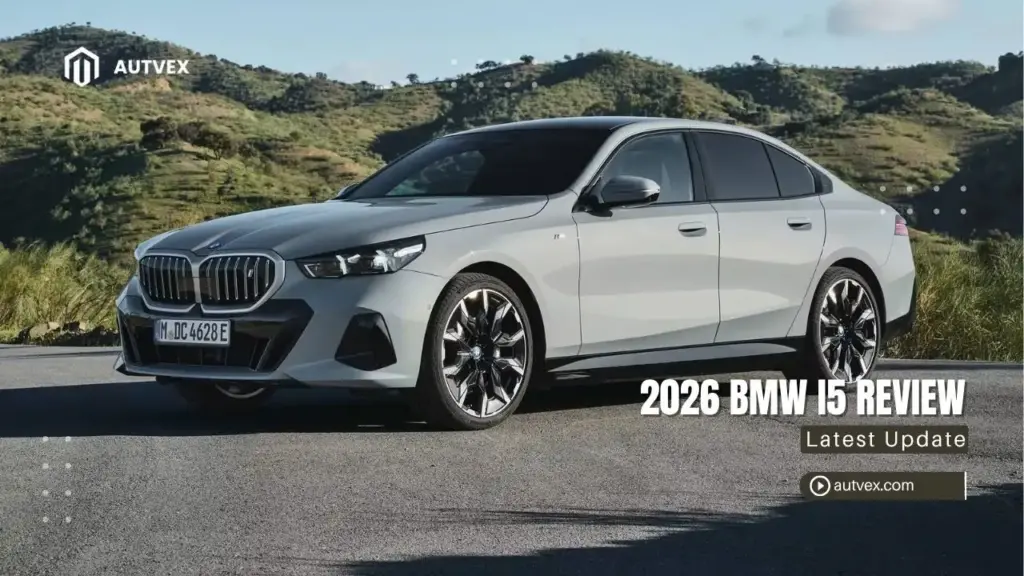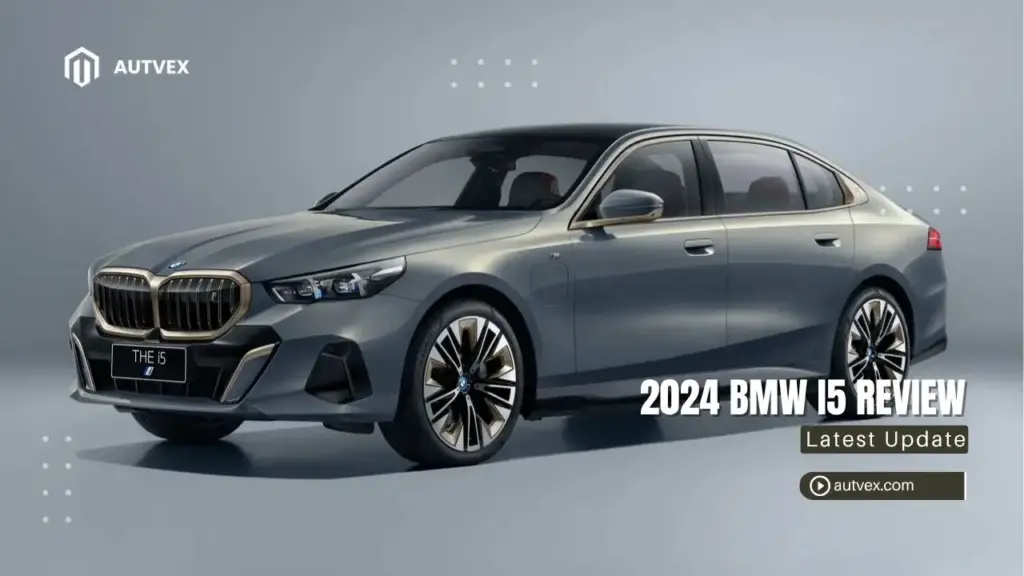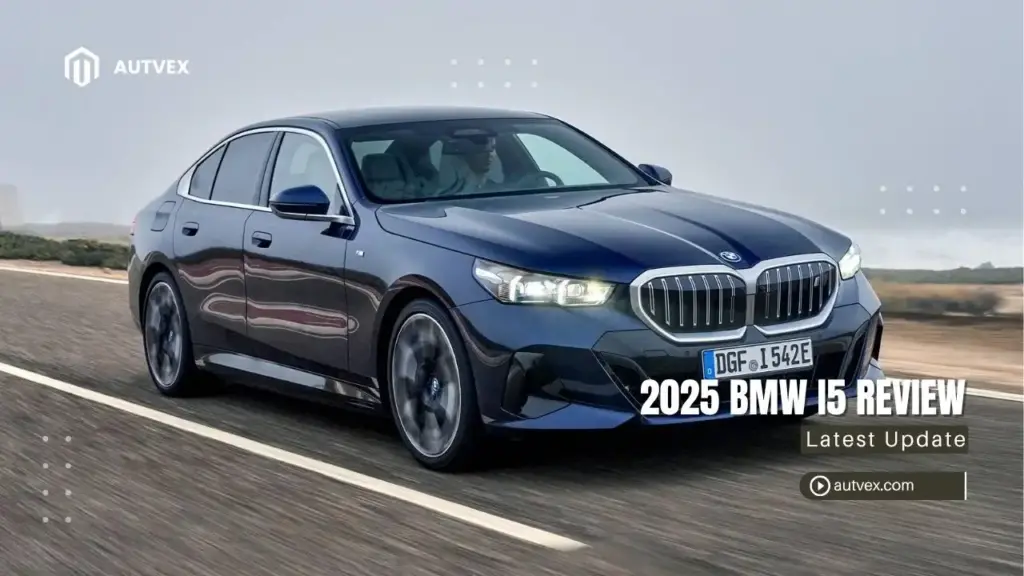You may also like:
The 2026 BMW i5 delivers meaningful improvements without a price increase, offering up to 310 miles of range, faster 11 kW AC charging, and upgraded standard features across its three trim levels. Starting at $67,100, this all-electric luxury sedan competes directly with the Mercedes-Benz EQE and Audi A6 e-tron, combining BMW’s signature driving dynamics with zero-emission technology[1].
For American luxury sedan shoppers considering an electric vehicle, the 2026 i5 represents a compelling evolution of BMW’s EV strategy. The improvements center on practical enhancements—better range, quicker charging, and elevated standard equipment—rather than flashy redesigns. According to Autvex automotive experts, these refinements position the i5 as one of the most well-rounded premium electric sedans available in the U.S. market today.
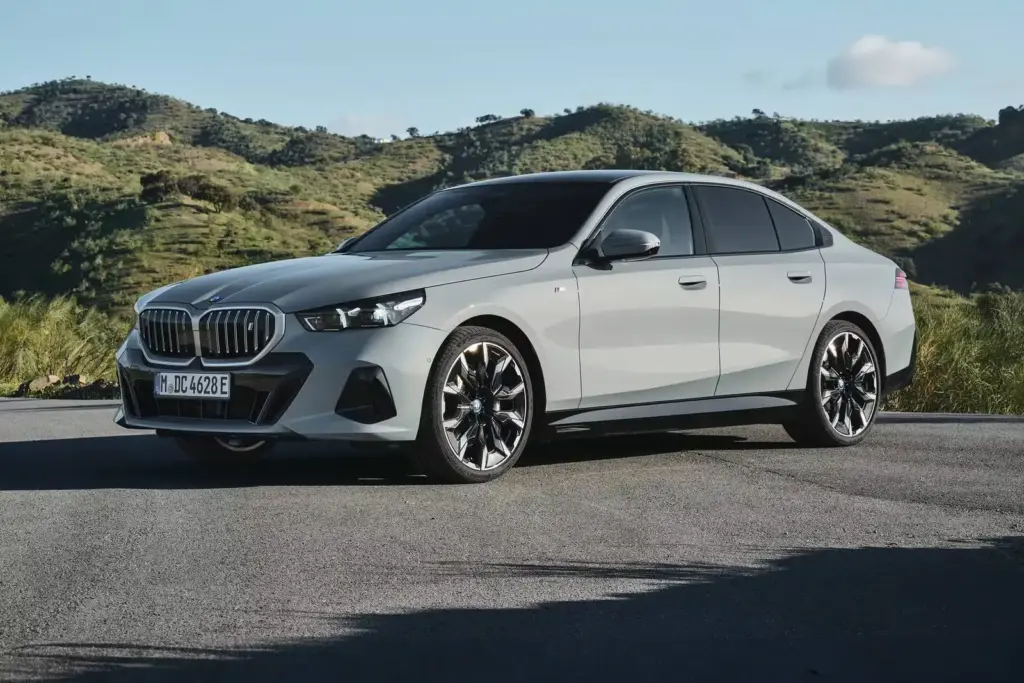
2026 BMW i5 Overview
What’s New for 2026
BMW engineers focused on refining efficiency and value for the 2026 model year. The most significant improvement comes from enhanced silicon carbide semiconductors that reduce energy losses in the electric drivetrain, translating to an 8% range increase over 2025 models[1].
The upgrades extend beyond just the powertrain:
- Range increase: eDrive40 now achieves 310 miles on 19-inch wheels (up from 286 miles)
- Faster AC charging: Upgraded from 7.4 kW to 11 kW for overnight home charging
- New exterior color: Frozen Portimao Blue Metallic joins the palette
- Improved efficiency: Revised wheel bearings reduce rolling resistance
- Enhanced audio: Harman Kardon sound system now standard across all trims
- Better comfort: Enhanced lumbar support and gloss black door panel switchgear
- Safety addition: Standard Seal & Drive Tire Kit for emergency mobility
- Interior options: Two new Merino leather color combinations (Dark Violet/Atlas Grey and Taupe/Atlas Grey)
These changes demonstrate BMW’s commitment to continuous improvement rather than wholesale redesigns. For buyers who understand how long it takes to buy a car, knowing that 2026 models offer more capability at the same price as 2025 makes the purchasing decision more straightforward[1].
Key Highlights & Market Position
The i5 occupies a competitive space in the luxury electric sedan segment. With three distinct trim levels—eDrive40, xDrive40, and M60 xDrive—BMW offers configurations ranging from efficient rear-wheel drive to performance-focused all-wheel drive.
| Feature | 2026 BMW i5 | Market Context |
|---|---|---|
| Starting Price | $67,100 | Undercuts Mercedes EQE 350+ by $7,800 |
| Power Range | 335-593 hp | Competitive with Audi A6 e-tron (375 hp base) |
| Range | 239-310 miles | Strong real-world efficiency at 104/105 MPGe |
| Charging | 11 kW AC / 205 kW DC | Slower than Audi’s 800V architecture (270 kW) |
| Interior Tech | BMW Curved Display with iDrive 8.5 | Industry-leading user interface |
The i5’s greatest strength lies in its real-world usability. Car and Driver testing confirms that the i5 delivers on its range promises, with the eDrive40 achieving close to EPA estimates in mixed driving conditions[2]. The 5th-generation BMW eDrive electric motor provides instant torque delivery that feels natural and refined, avoiding the artificial surge characteristic of some competitors.
Who Should Buy the 2026 BMW i5
The ideal i5 buyer falls into several distinct categories. BMW loyalists making the transition from gas-powered 5 Series sedans will find familiar driving dynamics wrapped in electric technology. The steering weight, chassis balance, and overall feel maintain BMW’s signature character despite the shift to battery power.
Best suited for:
- Luxury sedan buyers prioritizing driving experience over maximum range
- Tech-savvy drivers who appreciate advanced infotainment systems
- Daily commuters with home charging access (Level 2 recommended)
- BMW enthusiasts seeking their first premium EV
- Buyers wanting all-wheel drive capability in an electric sedan
May want to consider alternatives:
- Shoppers requiring 400+ mile range (Tesla Model S offers more)
- Budget-conscious EV buyers (Genesis Electrified G80 provides strong value)
- Those prioritizing fastest charging speeds (Audi A6 e-tron’s 800V system charges faster)
- Buyers needing maximum cargo space (SUV alternatives offer more versatility)
According to Autvex market analysis, the i5’s sweet spot includes suburban and urban professionals who value the combination of luxury, performance, and practicality. The included two years of free Electrify America charging sweetens the ownership proposition considerably[1].
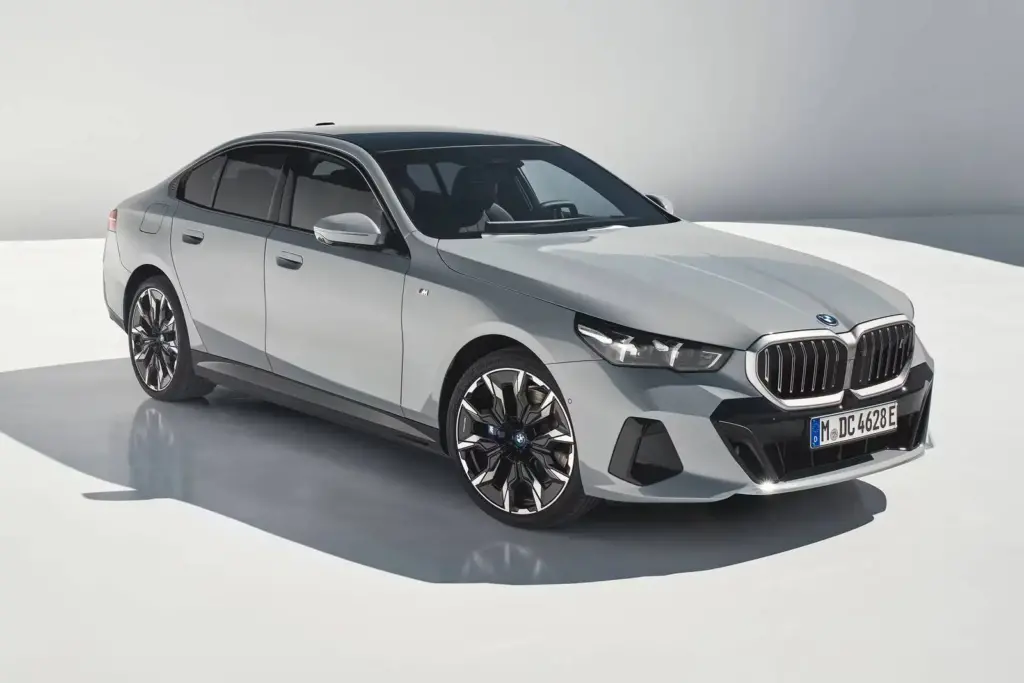
Trim Levels & Pricing
i5 eDrive40 (Base Model)
The rear-wheel-drive eDrive40 starts at $67,100 MSRP and represents the most efficient configuration. The single rear-mounted electric motor produces 335 horsepower and 295 lb-ft of torque—more than adequate for daily driving and highway merging. Zero to 60 mph arrives in 5.7 seconds, which feels quicker in practice due to instant electric torque delivery[2].
Range varies based on wheel selection:
- 19-inch wheels: 310 miles EPA estimated range
- 20-inch wheels: 295 miles EPA estimated range
- Real-world efficiency: 104 MPGe city, 105 MPGe highway
The eDrive40 includes impressive standard equipment including heated front seats, dual-zone climate control, panoramic sunroof, Veganza vegan leather upholstery, and the BMW Curved Display with iDrive 8.5. New for 2026, all models receive the upgraded Harman Kardon premium audio system and enhanced lumbar support at no additional cost.
i5 xDrive40 (Mid-Tier)
For $70,100, the xDrive40 adds a front electric motor for all-wheel drive capability. Combined output reaches 389 horsepower and 435 lb-ft of torque, dropping the 0-60 mph time to 5.2 seconds. The dual-motor setup provides superior traction in adverse weather conditions—a meaningful consideration for buyers in northern states[2].
The additional motor weight and power consumption reduce range to 259-278 miles depending on wheel size. For the $3,000 premium over the eDrive40, buyers gain all-weather confidence and noticeably improved acceleration, particularly when merging onto highways or passing slower traffic.
i5 M60 xDrive (Performance)
At $85,500, the M60 xDrive positions itself as BMW’s performance-focused electric sedan. With 590-593 horsepower and 586 lb-ft of torque, it rockets to 60 mph in 3.7 seconds according to BMW—though Car and Driver testing achieved an even quicker 3.3 seconds[3].
M60-exclusive features:
- Adaptive M suspension with 5mm lower ride height
- Bowers & Wilkins 17-speaker audio system
- M Sport exterior styling with lip spoiler
- 20-inch M alloy wheels (21-inch optional)
- Enhanced braking system with red calipers
- Four-zone automatic climate control
- 22 kW AC charging (faster than base models)
The performance premium comes with reduced range—239-253 miles EPA estimated. However, real-world testing suggests the M60 can exceed EPA estimates in favorable conditions, with some owners reporting 260+ miles in mixed driving[4].
Value Comparison vs 2025 Model
BMW held pricing steady for 2026 despite meaningful improvements. The eDrive40’s $67,100 starting price matches 2025, yet buyers receive 24 additional miles of range, faster AC charging, and upgraded standard features worth approximately $2,000 if purchased separately[1].
| Aspect | 2025 i5 | 2026 i5 | Value Change |
|---|---|---|---|
| Starting Price | $67,100 | $67,100 | No increase |
| Max Range (eDrive40) | 286 miles | 310 miles | +24 miles (8%) |
| AC Charging | 7.4 kW | 11 kW | 48% faster |
| Standard Audio | Basic system | Harman Kardon | ~$1,000 value |
| Lumbar Support | Standard | Enhanced | Improved comfort |
This value equation makes 2026 an attractive year for i5 purchases. Anyone considering a late-2025 model should explore whether dealers offer discounts that exceed the improvements BMW built into the 2026 refresh.
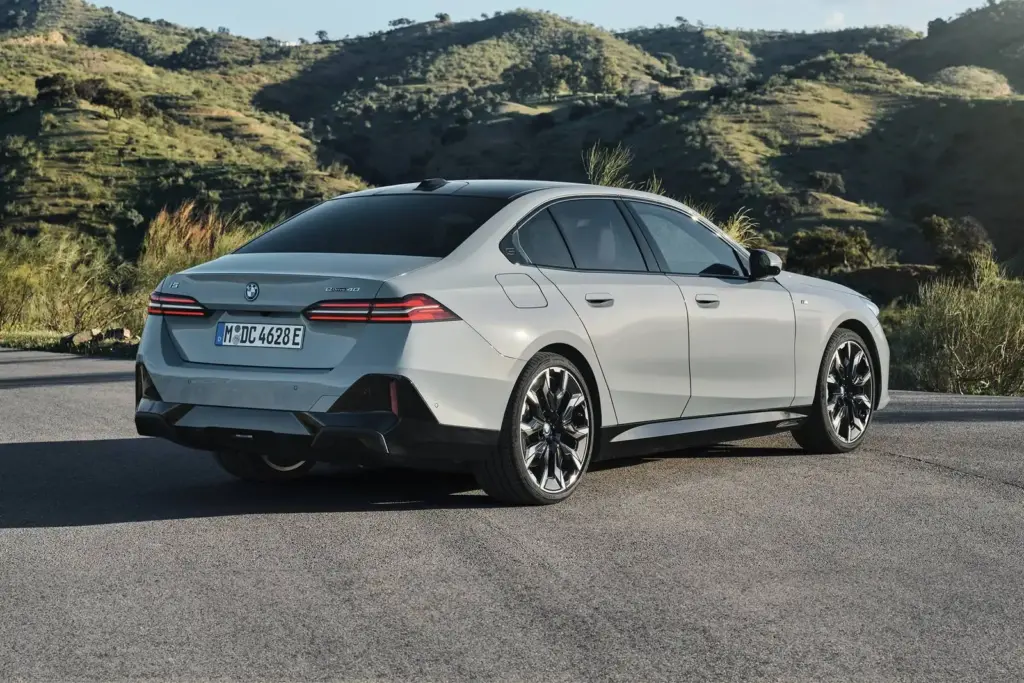
Performance & Powertrain
Electric Motor Technology
The 2026 i5 utilizes BMW’s 5th-generation eDrive electric motor system, representing years of refinement in electric propulsion. The key advancement for 2026 involves silicon carbide semiconductor technology, which reduces heat generation and energy losses during power conversion. This translates directly to improved efficiency and range without requiring a larger battery pack[1].
Engineers also revised wheel bearings to reduce rolling resistance, further contributing to the 8% range improvement. These changes demonstrate how incremental technological advances compound to create meaningful real-world benefits.
The instant torque delivery across all trims provides a fundamentally different driving character compared to internal combustion engines. There’s no waiting for turbo lag or downshifts—acceleration happens immediately and progressively throughout the speed range.
Battery & Range Details
All i5 variants utilize an 84.3 kWh battery pack (81.2 kWh usable capacity). BMW’s battery management system prioritizes longevity by limiting charging to approximately 96% of total capacity, preserving battery health over the vehicle’s lifetime[2].
Real-world range performance:
- eDrive40: Consistently achieves 280-310 miles in mixed driving
- xDrive40: Delivers 250-275 miles with spirited driving
- M60: Ranges from 220-255 miles depending on driving style
Winter range testing reveals more substantial impacts. Independent tests in Finland showed the i5 maintaining 55-60% of rated range in extreme cold conditions (-20°C to -15°C), significantly better than some competitors that dropped below 40%[5]. The i5’s thermal management system pre-conditions the battery when navigation is set to a DC fast-charging station, optimizing charging speeds.
EPA efficiency ratings of 104 MPGe city and 105 MPGe highway position the i5 among the most efficient luxury sedans, outperforming both the Mercedes EQE SUV (98/87 MPGe) and the Audi e-tron (78/79 MPGe) by substantial margins[2].
Acceleration & Driving Dynamics
BMW’s electric sedan retains the brand’s characteristic handling balance despite weighing approximately 2,400-2,500 pounds depending on configuration. The low-mounted battery pack lowers the center of gravity compared to gas-powered 5 Series models, reducing body roll in corners.
Performance metrics:
- eDrive40: 5.7 seconds (0-60 mph), rear-wheel drive feel with predictable handling
- xDrive40: 5.2 seconds (0-60 mph), enhanced traction and stability in all conditions
- M60: 3.3-3.7 seconds (0-60 mph), sports car acceleration with sedan practicality
The adaptive M suspension on the M60 provides the most dynamic setup, though even base models demonstrate composed handling. One-pedal driving mode is available across the range, allowing drivers to modulate speed using only the accelerator pedal in most situations. Regenerative braking feels natural and progressive rather than the abrupt deceleration found in some EVs.
Charging Capabilities
The 2026 model year brings improved AC charging from 7.4 kW to 11 kW, reducing overnight charging times by approximately 48%. This matters most for home charging, where most i5 owners will replenish their batteries[1].
Charging specifications:
- AC Level 2 (home): 11 kW adds approximately 38 miles of range per hour
- DC fast charging: Up to 205 kW on 400V architecture
- 10-80% charge time: Approximately 30 minutes at peak charging speeds
- Peak observed: 213 kW in real-world testing conditions
The i5’s 400V electrical architecture charges slower than competitors using 800V systems. The Audi A6 e-tron achieves 270 kW peak charging and completes 10-80% in just 21 minutes—a meaningful advantage for frequent road-trippers[2].
BMW includes two years of complimentary Electrify America charging, covering 30-minute sessions at the nation’s most extensive DC fast-charging network. This benefit alone represents $1,500-$2,000 in value for moderate users. For those wondering about Tesla Supercharger compatibility, BMW has not announced plans for native Tesla connector integration as of September 2025.
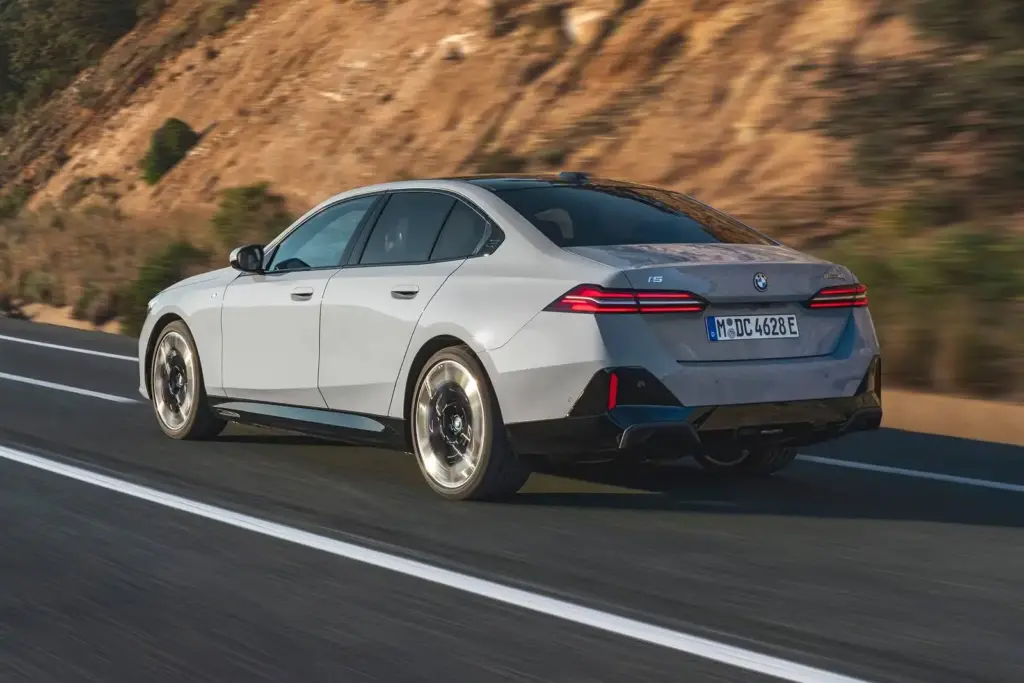
Exterior Design & Style
Signature BMW Styling Elements
The i5 maintains traditional BMW sedan proportions despite having no internal combustion engine under the hood. The long hood, short front overhang, and rearward cabin placement create the classic premium sedan silhouette American buyers expect from the brand.
BMW’s iconic kidney grille receives special treatment on the i5, with optional Iconic Glow illumination that outlines the grille edges in white light when the vehicle is unlocked or in motion. While some purists question the necessity of a grille on an electric vehicle, the design maintains visual continuity with BMW’s broader lineup[2].
The aerodynamic coefficient of 0.23 ranks among the slipperiest sedans in production, achieved through flush door handles, active grille shutters, and carefully sculpted underbody panels. These efficiency measures contribute directly to the i5’s impressive real-world range.
Lighting & Visual Features
Adaptive LED headlights come standard with self-leveling and automatic high beam functionality. The M Shadowline package adds darkened exterior trim elements that create a sportier, more contemporary appearance. Extended Shadowline trim continues across the door handles and window surrounds for visual cohesion.
Turn signal mirrors integrate cleanly into the door cap design, while the optional rear lip spoiler on M60 models adds subtle performance cues without veering into boy-racer territory.
Wheels & Tire Options
Wheel selection directly impacts range, with each inch increase reducing EPA estimates by approximately 10-15 miles:
- 19-inch wheels: Best efficiency, 310 miles maximum range, standard on eDrive40
- 20-inch wheels: Balanced aesthetics and efficiency, -15 miles range penalty
- 21-inch wheels: M60 standard equipment, sportiest appearance, -25 miles range impact
New designs for 2026 offer updated spoke patterns, though BMW has not disclosed specific weight reductions. Buyers prioritizing maximum range should stick with 19-inch wheels unless visual preferences strongly favor larger diameter options.
Available Exterior Colors
The 2026 color palette spans conservative to bold choices. Alpine White and Carbon Black Metallic remain popular no-cost options, while metallic and specialty colors command $650-$3,300 premiums.
Standard colors:
- Alpine White (no charge)
- Carbon Black Metallic
Metallic finishes ($650-$1,000):
- Mineral White Metallic
- Black Sapphire Metallic
- Phytonic Blue Metallic
- Sophisto Grey
- Tanzanite Blue
Premium colors:
- Fire Red
- Cape York Green
- Frozen Portimao Blue Metallic (new for 2026, $3,300)
The new Frozen Portimao Blue features a matte finish that requires special care but creates striking visual presence. Buyers should understand that matte finishes cannot be polished and require specific maintenance procedures to avoid damage.
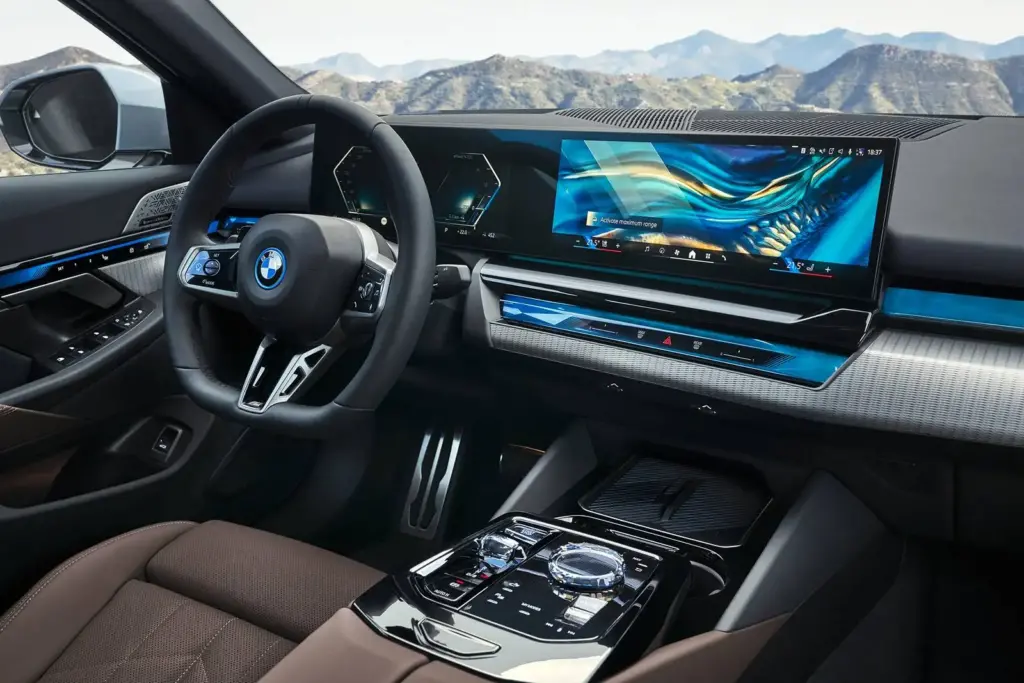
Interior Design & Comfort
Cabin Materials & Build Quality
BMW equips all 2026 i5 models with Veganza vegan leather upholstery as standard—a synthetic material that mimics traditional leather’s appearance and texture while appealing to environmentally conscious buyers. Those preferring genuine leather can upgrade to Extended Merino Leather for $2,450, which covers more interior surfaces and offers softer hand feel[1].
New for 2026, gloss black door panel switchgear replaces the previous matte finish, creating a more premium appearance that resists fingerprints better than piano black trim. The crystalline Interaction Bar ambient lighting runs across the dashboard, providing customizable illumination that integrates with the climate control interface.
Fit and finish throughout the cabin meets luxury segment expectations, with tight panel gaps and quality materials extending to lower surfaces. The i5 feels substantially more upscale than the BMW 2 Series Gran Coupe, justifying its premium positioning.
Seating Capacity & Space
The i5 comfortably accommodates five adults with generous front and rear legroom. Front passengers enjoy excellent head and shoulder room, while rear passengers benefit from a flat floor (no transmission tunnel) that improves center seat comfort.
However, rear foot well space is somewhat compromised by the battery pack placement. Taller passengers may find their feet tucked closer to the front seats than in the gas-powered 5 Series. This represents a minor compromise rather than a dealbreaker, but it’s worth noting during test drives.
Wide-opening doors facilitate easy entry and exit, particularly helpful when installing child seats or assisting elderly passengers.
Interior Color Schemes
BMW expanded interior color options for 2026, adding two new Merino leather combinations that bring total schemes to eight[1]:
Standard Veganza options:
- Black
- Smoke White
- Burgundy Red
- Espresso Brown
Merino leather options (+$2,450):
- Copper Brown/Atlas Grey
- Silverstone II Atlas Grey
- Dark Violet/Atlas Grey (new for 2026)
- Taupe Grey/Atlas Grey (new for 2026)
The new Dark Violet combination provides the most distinctive appearance, pairing rich purple tones with neutral grey accents. This choice appeals to buyers wanting individuality without sacrificing sophistication.
Comfort & Convenience Features
Standard heated front seats provide welcome warmth during cold weather, while optional heated and ventilated front seats with massage functions ($1,500-$2,000 depending on package) elevate comfort to spa levels. The massage function offers multiple programs targeting different muscle groups—a genuine benefit on long drives rather than a gimmick.
Heated rear seats are bundled with other premium options, typically requiring the Luxury Seating Package. The panoramic sunroof comes standard across all trims, flooding the cabin with natural light while maintaining excellent headroom thanks to the sunroof’s slim profile.
The 2026 model’s enhanced lumbar support addresses a common complaint from previous years. Four-way adjustable lumbar now comes standard, with upgraded controls that make finding the perfect position easier[1].
Dual-zone climate control is standard, with four-zone automatic climate control available on xDrive40 and standard on M60. This allows rear passengers independent temperature control—appreciated on family road trips where preferences vary.
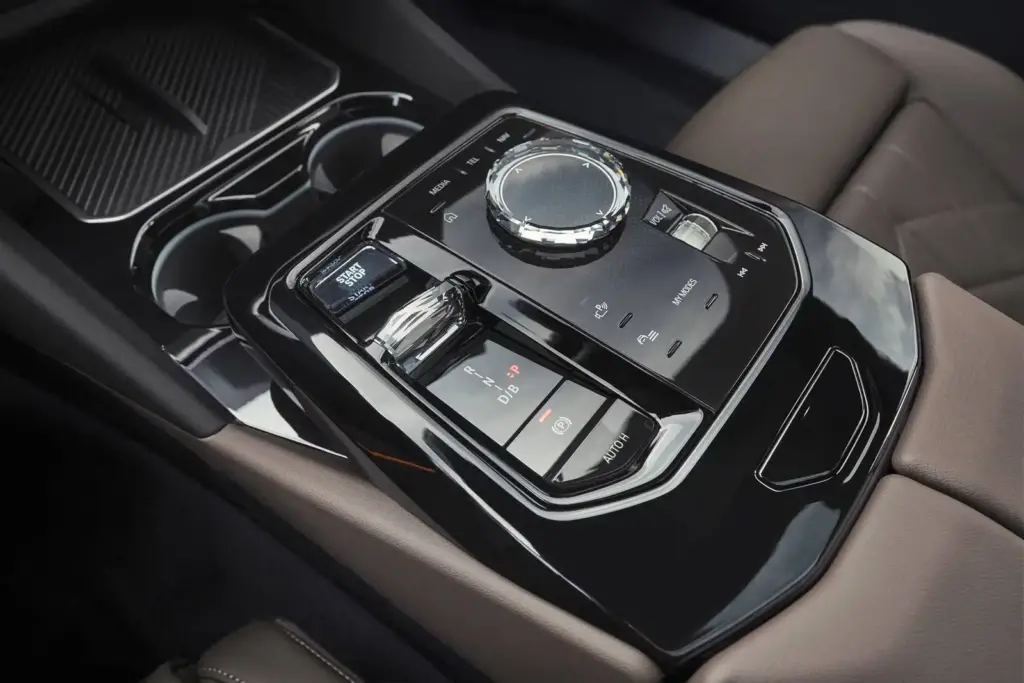
Technology & Infotainment
BMW Curved Display System
The i5’s technology centerpiece consists of a seamless curved glass panel housing a 12.3-inch digital instrument cluster and 14.9-inch central touchscreen. This design creates visual continuity while keeping critical driving information directly in the driver’s sightline.
The configurable displays offer multiple layout options. Drivers can emphasize navigation, audio, performance data, or EV-specific information like energy flow and charging status. High-resolution graphics render clearly even in direct sunlight, and the anti-glare coating minimizes reflections[2].
iDrive 8.5 Operating System
BMW’s latest iDrive iteration supports multiple interaction methods—touch, voice commands, hand gestures, and the traditional iDrive controller wheel. This redundancy means drivers can choose their preferred input method rather than being forced into a single interface style.
QuickSelect shortcuts provide one-touch access to climate, audio, and navigation functions without diving through menus. EV-specific features include:
- Real-time range prediction accounting for traffic, weather, and driving style
- Charging station integration with live availability data
- Intelligent route planning that adds charging stops automatically
- Pre-conditioning controls to optimize battery temperature before charging
The voice assistant responds to natural language commands rather than requiring specific phrases. Saying “I’m cold” automatically increases cabin temperature, while “Find me a fast charger” routes to the nearest DC fast-charging station with real-time availability[2].
Connectivity & Smartphone Integration
Wireless Apple CarPlay and Android Auto come standard, connecting automatically when the driver’s phone is in the vehicle. The wireless charging pad accommodates even the largest smartphones, including iPhone 15 Pro Max and Samsung Galaxy S24 Ultra.
Six USB-C ports (two front, four rear) ensure all passengers can keep devices charged. The on-board Wi-Fi hotspot supports up to 10 connected devices, using either the vehicle’s embedded data connection or tethering to the driver’s phone.
BMW Remote Services enable owners to check charging status, pre-condition the cabin, lock/unlock doors, and locate the vehicle through the My BMW smartphone app. Over-the-air software updates add new features and improvements without requiring dealer visits—a capability increasingly expected in modern vehicles.
Audio & Entertainment
The 2026 i5 now includes the Harman Kardon premium audio system as standard equipment—a $1,000 value added at no cost[1]. This 16-speaker setup delivers excellent sound quality with clear highs, warm mids, and surprising bass depth given the lack of a traditional subwoofer enclosure.
M60 models upgrade to the Bowers & Wilkins 17-speaker system with diamond dome tweeters and dedicated amplifier. This represents BMW’s top audio option, delivering concert hall-like sound staging and detail resolution. Audiophiles will appreciate the difference, though casual listeners may find the Harman Kardon system entirely satisfactory.
Multiple sound profiles allow users to tailor audio characteristics to personal preferences or music genres. Studio mode emphasizes accuracy, while concert mode adds artificial spaciousness that some listeners prefer.
Optional Tech Upgrades
Beyond standard equipment, BMW offers several technology enhancements:
- BMW Iconic Glow ($500): Illuminated kidney grille outlines
- Dynamic Light Carpet ($300): Door sill illumination projects patterns
- Sky Lounge Panoramic Roof ($2,500): Includes LED ambient lighting patterns in the glass
- Head-up display with augmented reality ($1,900): Projects navigation arrows onto the road ahead
The augmented reality head-up display represents the most valuable optional technology, overlaying turn-by-turn directions directly in the driver’s view. This system genuinely improves usability compared to traditional head-up displays that show abstract arrow graphics.
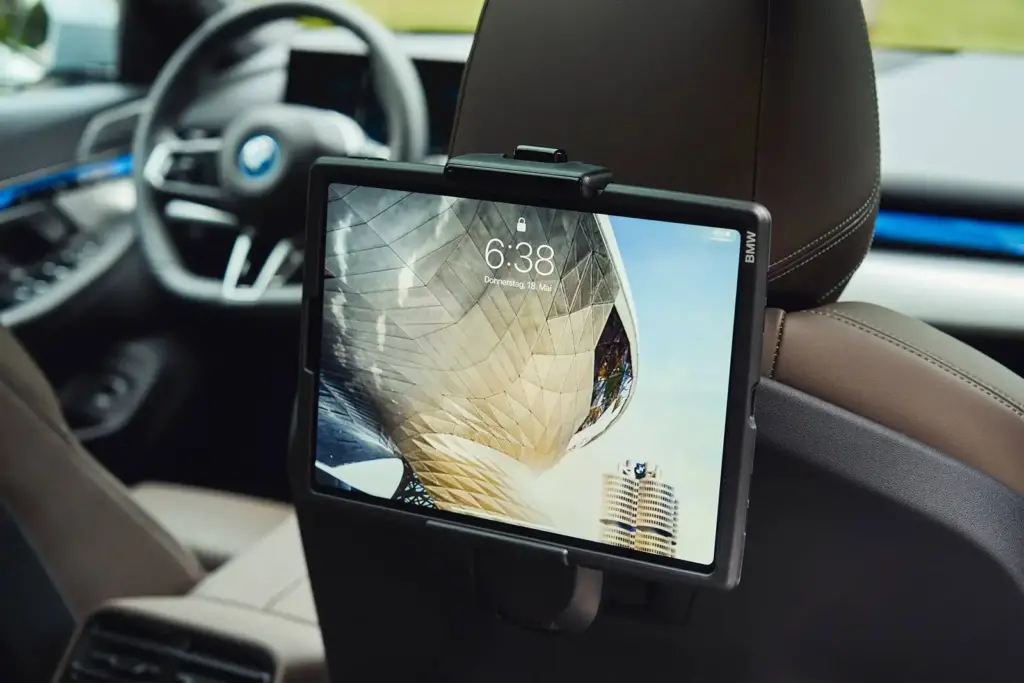
Safety & Driver Assistance
Standard Safety Features
BMW equips all i5 models with comprehensive active safety systems at no additional cost. These include frontal collision mitigation with automatic emergency braking, active blind spot detection that alerts drivers to vehicles in adjacent lanes, and lane keeping assistant that provides gentle steering corrections to maintain lane position[6].
Additional standard features:
- Lane departure warnings with visual and haptic alerts
- Driver attention alert monitoring steering patterns for drowsiness
- Speed limit assistant displaying current limits in the instrument cluster
- Tire pressure monitoring system with individual wheel readouts
- Emergency braking preparation pre-charging brakes when collision is imminent
These systems work unobtrusively in the background, intervening only when necessary while allowing confident drivers to maintain control.
Airbag & Structural Safety
The i5’s safety structure incorporates dual front side-mounted airbags, front and rear head airbags providing curtain protection, electronic stability control, and traction control. The high-strength chassis construction uses strategic placement of ultra-high-strength steel in critical impact zones.
The battery pack mounting structure serves dual purposes—protecting the battery from intrusion while contributing to overall chassis rigidity. This design approach typifies modern EV safety philosophy, turning potential vulnerabilities into structural advantages.
Advanced Driver Assistance (Optional)
The Driving Assistance Professional Package ($2,500) adds BMW’s most advanced semi-autonomous capabilities. BMW Highway Assistant enables hands-free highway driving at speeds up to 85 mph when lane markings are clear, though the system requires drivers to maintain attention by monitoring eye position[6].
Automated emergency braking with pedestrian detection improves on the standard system by identifying crossing pedestrians and cyclists earlier, initiating braking sooner to avoid or mitigate impacts. Adaptive cruise control with stop-and-go functionality handles highway traffic jams autonomously, maintaining safe following distances and resuming when traffic moves.
The traffic jam assistant combines lane keeping and adaptive cruise to handle bumper-to-bumper situations below 37 mph, significantly reducing driver fatigue during congested commutes.
Visibility & Parking
Rain-sensing wipers come standard, automatically adjusting speed based on precipitation intensity. Self-leveling LED headlamps maintain optimal beam pattern regardless of vehicle load, ensuring consistent illumination.
The optional 360-degree camera system ($800) provides bird’s-eye view perspective for tight parking situations, while the parking assistant with automated parking ($1,200) can identify suitable parking spaces and steer the vehicle into them while the driver controls throttle and brake.
Surround-view monitoring displays multiple camera angles simultaneously, making maneuvering in confined spaces straightforward even for drivers unfamiliar with the i5’s dimensions.
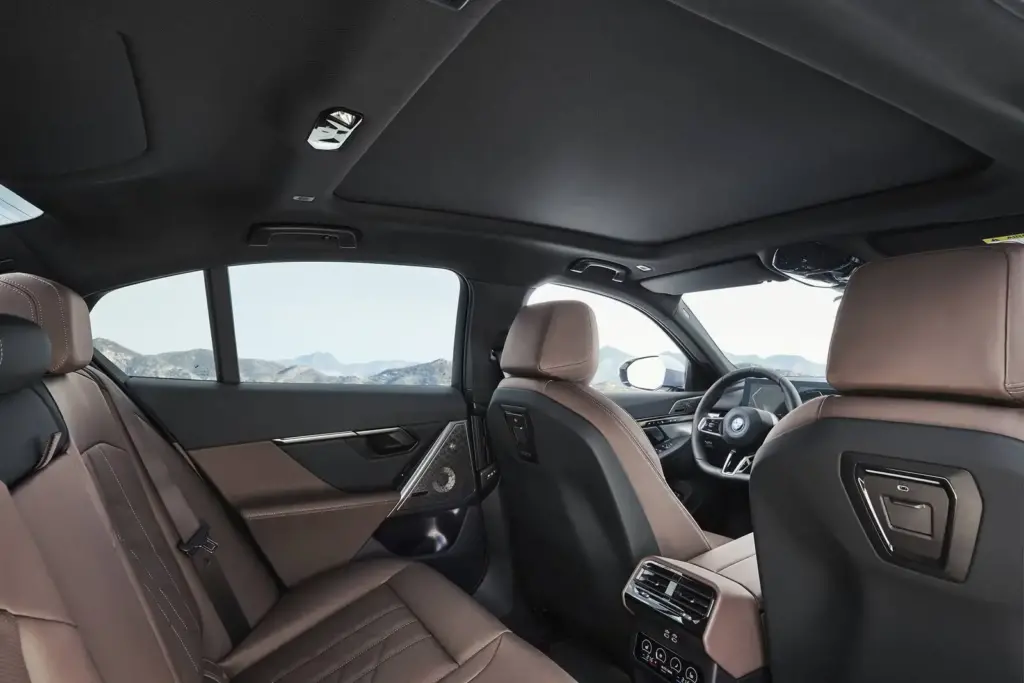
Cargo & Storage
Trunk Space Specifications
The i5 provides 17.3 cubic feet of trunk capacity—adequate for golf bags, luggage, or weekly grocery runs but approximately 2 cubic feet less than the gasoline-powered 5 Series. The battery pack placement under the rear seats encroaches on cargo volume, a common compromise in electric vehicles adapted from internal combustion platforms[2].
Pass-through rear seats allow longer items like skis to fit, though the opening is somewhat narrow. Underfloor storage compartments house the portable charging cable and provide secure storage for valuables.
The trunk opening is wide and low, simplifying loading and unloading heavy items. However, there’s no front trunk (frunk) as found on some dedicated EV platforms—the front space houses electronic components and the front motor on xDrive and M60 models.
Interior Storage Solutions
Interior storage includes a center console bin sized for two smartphones, though the wireless charging pad occupies one position. Door pockets are average-sized, accommodating water bottles but not oversized thermoses.
Cupholder placement in the center console positions drinks conveniently for both driver and passenger. A sunglass holder overhead provides padded storage for eyewear, while rear seat storage pockets hold magazines or tablets.
Child Seat Compatibility
LATCH anchor points are easily accessible between the rear seat cushion and backrest, simplifying child seat installation. The spacious rear seat accommodates larger convertible child seats comfortably, and the flat floor improves access when installing rear-facing seats.
Parents should note that the slightly reduced rear foot well space may affect forward-facing convertible seats for very tall children, though this won’t impact most families.
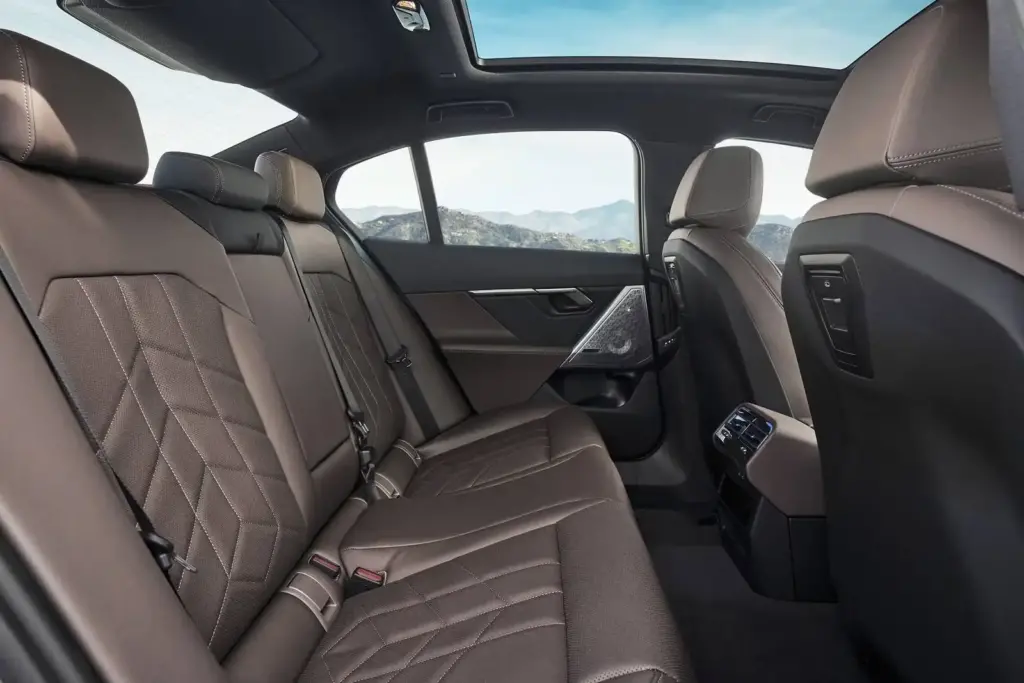
Ownership Costs & Incentives
Federal EV Tax Credit Eligibility
As of September 2025, the 2026 BMW i5 is not eligible for the federal EV tax credit[7]. The vehicle doesn’t meet the domestic assembly or battery component sourcing requirements established by the Inflation Reduction Act. This represents a $7,500 disadvantage compared to qualifying vehicles.
However, BMW Financial Services has structured lease programs that capture the tax credit as a capitalized cost reduction, effectively passing the benefit to lessees. Lease customers can realize $9,900 in credits on the i5 according to recent dealer bulletins[8].
State-level incentives vary significantly by location. California offers additional rebates through the Clean Vehicle Rebate Project, while Colorado provides up to $5,000 in state credits. Buyers should research their specific state programs before finalizing purchases.
Utility company rebates can reduce home charging installation costs by $500-$1,000 in some service territories. Additionally, HOV lane access in states like California provides time-saving benefits worth thousands annually for commuters.
Real-World Charging Costs
Home Level 2 charging installation typically costs $500-$2,000 depending on existing electrical capacity and distance from the main panel. Most i5 owners install 40-50 amp circuits supporting the vehicle’s 11 kW onboard charger.
National average electricity rates ($0.14/kWh) mean filling the i5’s 81.2 kWh usable battery costs approximately $11.35 at home—far less than filling a comparable gas sedan. At the EPA-rated 104 MPGe, this translates to fuel costs around $0.04 per mile versus $0.12-$0.15 per mile for premium gas vehicles[2].
Public DC fast-charging costs vary dramatically by network. Electrify America charges $0.43-$0.48/kWh, making a 10-80% charge approximately $24-$27. The included two years of free Electrify America charging eliminates these costs for early ownership, representing $1,500-$2,000 in value for moderate users.
Maintenance & Warranty
BMW covers the i5 with a 4-year/50,000-mile basic warranty and an 8-year/100,000-mile battery warranty. The battery coverage guarantees at least 70% capacity retention, typical for the industry[2].
Maintenance costs for EVs are substantially lower than gas vehicles. There are no oil changes, transmission services, or spark plug replacements. Brake longevity is extended significantly thanks to regenerative braking handling most deceleration, with brake pads often lasting 100,000+ miles.
Cabin air filter replacements, tire rotations, and coolant changes represent the primary scheduled maintenance. BMW estimates annual maintenance costs at $600-$800 versus $1,500-$2,000 for comparable gas models.
Over-the-air software updates add new features and improvements without dealer visits, similar to smartphone updates. Recent OTA updates have added new iDrive functions and improved range estimation algorithms.
Insurance & Depreciation
EV insurance rates typically run 10-20% higher than comparable gas vehicles due to higher repair costs if the battery is damaged. However, the i5’s strong safety ratings and advanced driver assistance features may qualify for insurance discounts that partially offset this premium.
Luxury EV depreciation remains difficult to predict given the segment’s relative newness. However, BMW brand strength and the i5’s strong reviews suggest it will hold value better than first-generation EVs from lesser-known brands. Buyers financing or leasing don’t bear depreciation risk directly, while those paying cash should factor potential 40-50% depreciation over three years.
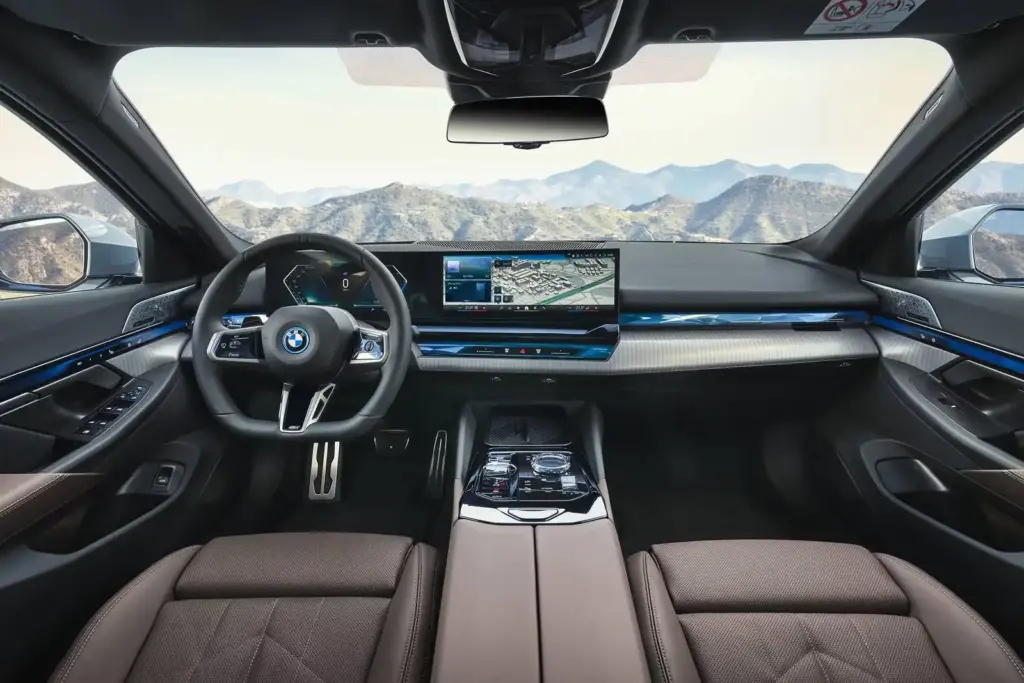
Competitive Comparison & Alternatives
BMW i5 vs Mercedes-Benz EQE
The Mercedes-Benz EQE 350+ starts at $74,900 with just 288 horsepower—$7,800 more than the i5 eDrive40’s $67,100 asking price for 335 horsepower. This pricing disadvantage represents Mercedes’ biggest challenge against the BMW[2].
| Specification | BMW i5 eDrive40 | Mercedes EQE 350+ | Advantage |
|---|---|---|---|
| Starting Price | $67,100 | $74,900 | BMW by $7,800 |
| Horsepower | 335 hp | 288 hp | BMW by 47 hp |
| EPA Range | 310 miles | 260 miles | BMW by 50 miles |
| Efficiency | 104/105 MPGe | 98/87 MPGe | BMW significantly |
| Platform | Adapted ICE | Dedicated EV | Mercedes |
The EQE’s dedicated EV platform provides a flat floor throughout and slightly more interior space, but the i5’s superior driving dynamics and lower price make it the better value proposition for most buyers.
BMW i5 vs Audi A6 e-tron
The Audi A6 e-tron Sportback starts at $65,900 with 375 horsepower—$1,200 less than the i5 while offering more power. Audi’s 800V electrical architecture enables 270 kW peak DC fast-charging versus BMW’s 205 kW, completing 10-80% charges in 21 minutes versus 30 minutes for the i5[2].
For road-trippers who frequently use public fast-charging, the Audi’s charging advantage is meaningful. However, the BMW offers a more traditional luxury sedan experience with better real-world range efficiency. Buyers preferring BMW’s driving dynamics and brand prestige will find the i5 more satisfying despite the charging speed disadvantage.
The 2025 Audi A6 e-tron represents Audi’s first purpose-built electric sedan on the PPE platform, offering more futuristic styling and technology than the BMW’s evolutionary approach.
BMW i5 vs Audi e-tron / Genesis Electrified G80
The Audi e-tron starts at $71,995, offering lower efficiency at 78/79 MPGe—significantly worse than the i5’s 104/105 MPGe. The e-tron’s older technology shows in its driving dynamics and charging capabilities[2].
The Genesis Electrified G80 provides strong value with competitive range and luxury appointments at a lower price point. However, Genesis lacks BMW’s brand prestige and dealer network density, which matters for service accessibility.
The i5 strikes the best balance of performance, efficiency, and brand reputation among these alternatives. Its 5th-generation electric motor technology delivers superior real-world range and lower operating costs.
BMW i5 vs Tesla Model S / Porsche Taycan
Tesla Model S offers substantially more range (405 miles for Long Range), access to the Supercharger network, and a lower starting price around $76,000. However, it lacks the i5’s traditional luxury sedan refinement and BMW’s driving dynamics[2].
The Porsche Taycan delivers superior handling and 800V charging but starts above $90,000—substantially more than the i5. The Taycan appeals to driving enthusiasts willing to pay for ultimate performance, while the i5 offers better everyday livability.
For buyers prioritizing traditional automotive luxury with electric efficiency, the i5 represents the sweet spot. Tesla buyers prioritize technology and range, while Porsche buyers want maximum driving engagement regardless of cost.
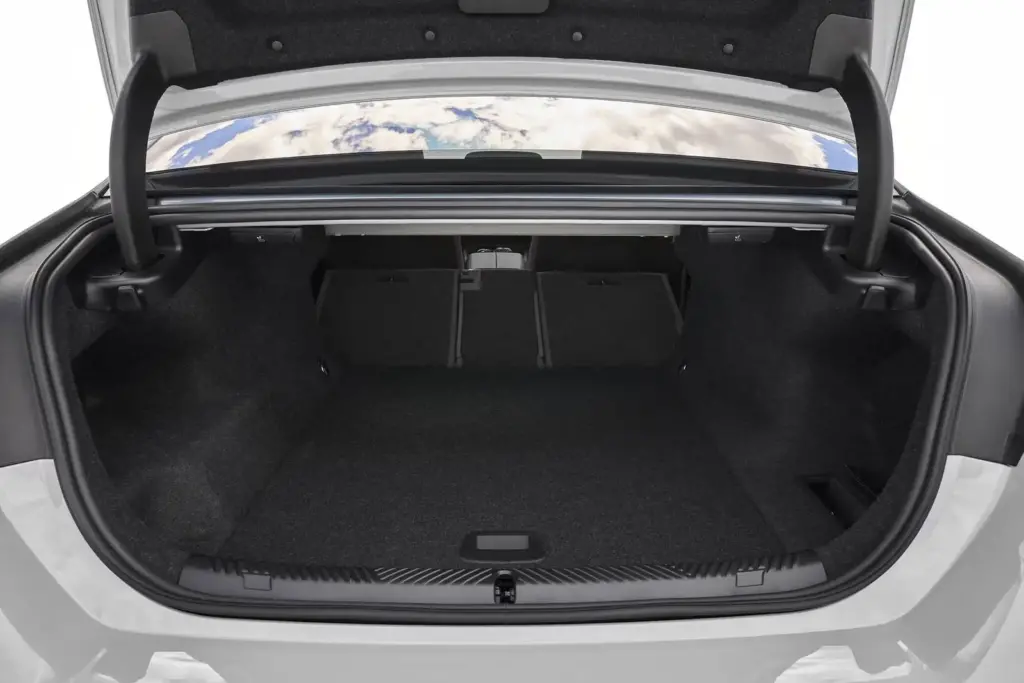
Pros & Cons Summary
Key Advantages
The 2026 BMW i5 excels in several critical areas that matter to American luxury sedan buyers[2]:
- Comfortable, classy interior: Premium materials and excellent build quality throughout the cabin
- Abundant technology: BMW Curved Display, iDrive 8.5, and comprehensive driver assistance features
- Strong performance: Even the base eDrive40 provides satisfying acceleration; M60 delivers genuine thrills
- Excellent real-world range: Consistently meets or exceeds EPA estimates in mixed driving
- BMW driving dynamics: Maintains the brand’s signature handling and steering feel despite EV architecture
- Improved value: 2026 upgrades include better range, faster charging, and enhanced standard features at no price increase
Notable Drawbacks
No vehicle is perfect, and the i5 has several limitations worth considering:
- Trunk space compromise: 17.3 cubic feet is adequate but less than the gas 5 Series
- Complex infotainment: iDrive 8.5’s many features require learning time
- Artificial steering feel: Some purists find the electric steering less communicative than older hydraulic BMW systems
- Charging speed disadvantage: 205 kW maximum DC fast-charging lags 800V competitors by 5-10 minutes
- Limited rear foot well space: Battery placement reduces foot room for rear passengers
- No federal tax credit: Domestic sourcing requirements exclude the i5 from the $7,500 federal credit
- Range vs competitors: Some rivals offer 350+ mile range versus the i5’s 310-mile maximum
These drawbacks are relatively minor compared to the i5’s overall strengths, but buyers with specific priorities (maximum cargo space, fastest charging, longest range) may find better alternatives.
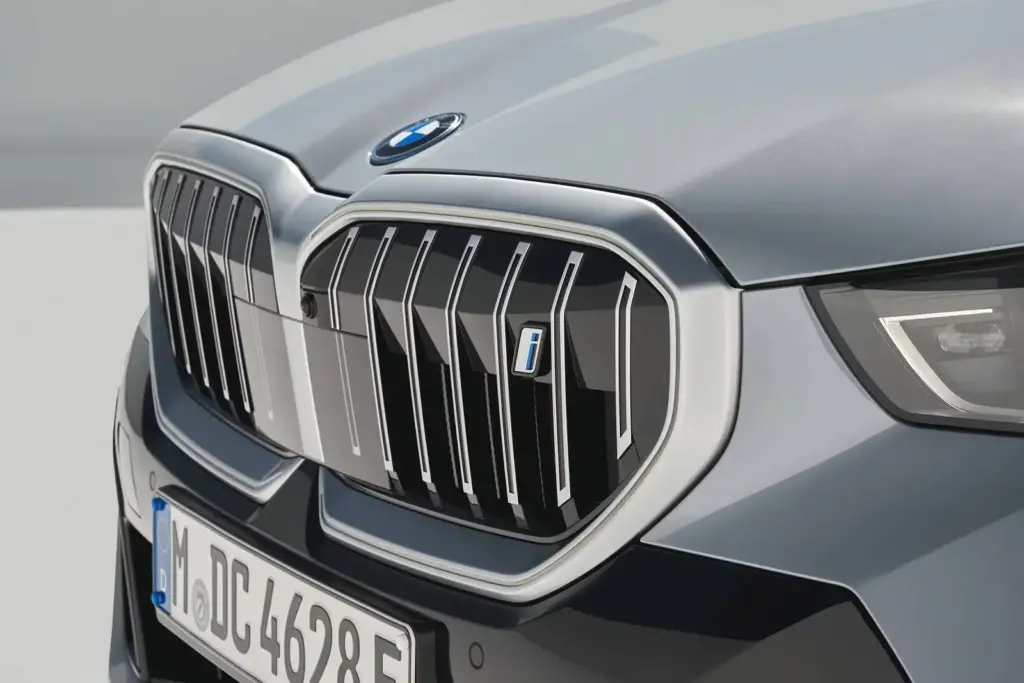
Final Verdict: Is the 2026 BMW i5 Worth It?
Best For
The 2026 BMW i5 particularly suits several buyer profiles[2]:
- BMW enthusiasts transitioning to electric: The i5 maintains brand character while embracing EV technology
- Driving experience prioritizers: Those who value handling and dynamics over maximum range specs
- Tech-savvy luxury shoppers: Buyers wanting cutting-edge infotainment and driver assistance
- Home charging owners: Daily commuters who charge overnight and rarely need public DC fast-charging
- All-weather commuters: xDrive models provide excellent traction in northern climates
Consider Alternatives If
Certain buyer priorities point toward competitors:
- Maximum range priority: Tesla Model S Long Range offers 405 miles versus 310 miles
- Fastest charging needs: Audi A6 e-tron’s 800V system charges 40% faster
- Budget-conscious shopping: Genesis Electrified G80 delivers similar luxury at lower pricing
- Maximum trunk space: Traditional luxury sedans or SUV alternatives offer more cargo capacity
- Federal tax credit: Qualifying vehicles provide $7,500 additional savings
Overall Rating & Recommendation
According to Autvex automotive experts, the 2026 BMW i5 earns strong marks across all evaluation criteria:
| Category | Rating | Commentary |
|---|---|---|
| Performance | 8.5/10 | Excellent acceleration and handling; charging speed could be faster |
| Interior | 8.5/10 | Premium materials and technology; slightly compromised rear space |
| Technology | 8.5/10 | Comprehensive features with some learning curve |
| Comfort | 8.5/10 | Excellent ride quality and quiet cabin |
| Value | 8.0/10 | Competitive pricing but lacks federal tax credit |
| Overall Score | 8.4/10 | Strong buy for luxury EV sedan segment |
The 2026 BMW i5 represents a mature, refined approach to electric luxury sedans. It doesn’t chase headline numbers like 500-mile range or 800V charging, instead focusing on delivering a well-rounded package that satisfies real-world needs. The meaningful improvements over 2025 models without price increases demonstrate BMW’s commitment to continuous enhancement.
For buyers seeking a premium electric sedan that drives like a BMW while offering excellent range and modern technology, the 2026 i5 delivers. The lack of federal tax credit eligibility is disappointing but not disqualifying, particularly for lease customers who can access equivalent discounts through BMW Financial Services programs.
Anyone considering the i5 should test drive it alongside the Audi A6 e-tron and Mercedes EQE to experience the differences firsthand. The BMW’s driving dynamics and interior quality typically win over cross-shoppers, making it the segment’s most balanced choice.
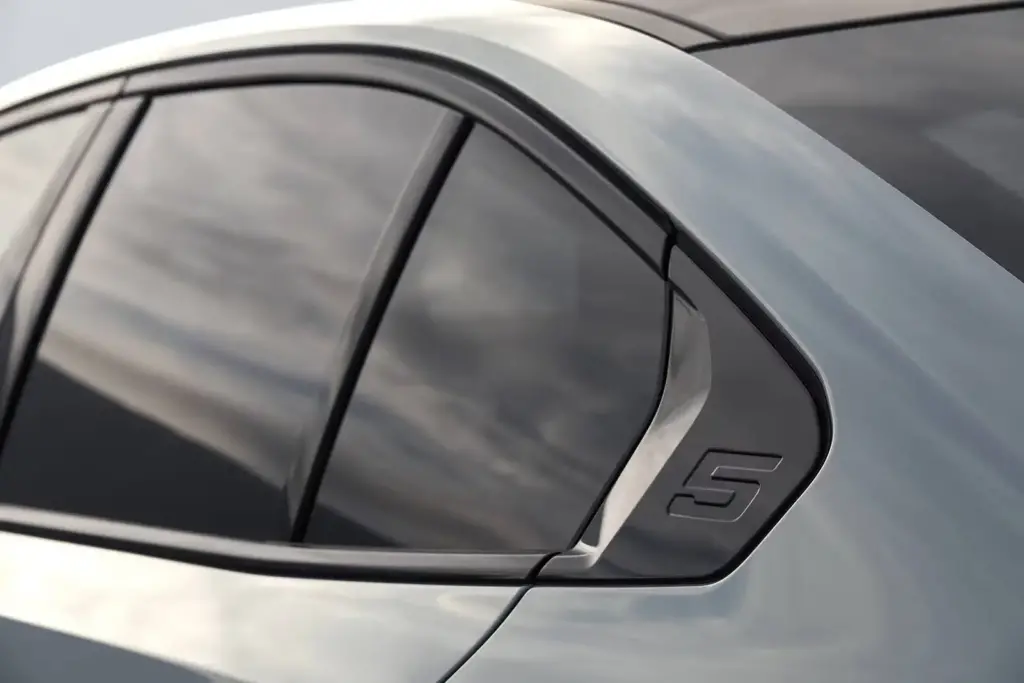
Key Takeaways
- The 2026 BMW i5 offers up to 310 miles of range and faster 11 kW AC charging without price increases over 2025 models.
- Three trim levels (eDrive40, xDrive40, M60) provide options from $67,100 to $85,500 with 335-593 horsepower configurations.
- Real-world range consistently meets or exceeds EPA estimates, with excellent efficiency at 104/105 MPGe surpassing competitors.
- The i5 is not eligible for federal EV tax credits, but lease programs offer equivalent $9,900 capitalized cost reductions.
- BMW’s driving dynamics and premium interior quality distinguish the i5 from competitors, though charging speeds lag 800V rivals.
- Standard Harman Kardon audio, enhanced lumbar support, and new color options improve 2026 value proposition significantly.
- Buyers prioritizing traditional luxury sedan experience with EV efficiency will find the i5 more satisfying than Tesla or newer EV-only brands.
FAQs
What is the range of the 2026 BMW i5?
The 2026 BMW i5 eDrive40 achieves up to 310 miles of EPA-estimated range on 19-inch wheels. The xDrive40 offers 259-278 miles, while the performance-focused M60 provides 239-253 miles. Real-world testing confirms these figures are achievable in mixed driving conditions[1].
How much does the 2026 BMW i5 cost?
Pricing starts at $67,100 for the eDrive40, $70,100 for the xDrive40, and $85,500 for the M60 xDrive. These prices match 2025 levels despite range and feature improvements. Destination charges and options add to the base prices[2].
How long does it take to charge a BMW i5?
DC fast-charging from 10-80% takes approximately 30 minutes at 205 kW peak rates. The upgraded 11 kW AC charging adds about 38 miles of range per hour for home overnight charging. Full charges at home typically complete in 7-8 hours[1].
Is the BMW i5 eligible for federal tax credit?
No, the 2026 BMW i5 does not qualify for the $7,500 federal EV tax credit due to foreign assembly and battery sourcing. However, lease customers can access equivalent $9,900 credits through BMW Financial Services programs[7].
What’s the difference between i5 eDrive40 and xDrive40?
The eDrive40 uses a single rear motor producing 335 horsepower with rear-wheel drive and up to 310 miles of range. The xDrive40 adds a front motor for 389 horsepower, all-wheel drive, and 259-278 miles of range for $3,000 more[2].
Does the BMW i5 have a frunk (front trunk)?
No, the BMW i5 does not have a front trunk. The space under the hood houses electronic components and, on xDrive and M60 models, the front electric motor. Cargo storage is limited to the 17.3-cubic-foot rear trunk[2].
How does the BMW i5 compare to Tesla Model S?
The Tesla Model S offers more range (405 miles), access to Supercharger network, and lower starting price. The BMW i5 provides superior interior quality, traditional luxury sedan refinement, and BMW’s driving dynamics at $67,100 versus Tesla’s $76,000 starting price[2].
Can I use Tesla Superchargers with the BMW i5?
As of September 2025, BMW has not announced Tesla Supercharger compatibility for the i5. The vehicle uses CCS1 charging connectors and works with Electrify America, EVgo, and other CCS networks. Two years of complimentary Electrify America charging is included[1].
What is the real-world range of the BMW i5 in winter?
Winter testing shows the i5 maintains 55-60% of rated range in extreme cold (-20°C to -15°C), delivering approximately 170-186 miles in harsh conditions. In typical winter weather (0-5°C), expect 250-280 miles depending on heating use and driving style[5].
Is the BMW i5 M60 worth the extra cost?
The M60’s $85,500 price ($18,400 premium over eDrive40) brings 593 horsepower, 3.3-second 0-60 mph times, adaptive suspension, and Bowers & Wilkins audio. It’s worth it for performance enthusiasts but unnecessary for most buyers who’ll find the eDrive40 entirely satisfying[3].
How much does it cost to charge a BMW i5 at home?
At the national average electricity rate of $0.14/kWh, filling the 81.2 kWh usable battery costs approximately $11.35. This translates to about $0.04 per mile versus $0.12-$0.15 per mile for comparable premium gas sedans[2].
Does the 2026 BMW i5 come with free charging?
Yes, BMW includes two years of complimentary 30-minute Electrify America DC fast-charging sessions. This benefit covers unlimited charging sessions during the two-year period, representing $1,500-$2,000 in value for moderate users[1].
References
- BMW Blog. (2025). 2026 BMW i5 Adds More Range, New Features, and Updates. https://www.bmwblog.com/2025/08/28/2026-bmw-i5-range-updates-new-features/
- Car and Driver. (2025). 2026 BMW i5 Review, Pricing, and Specs. https://www.caranddriver.com/bmw/i5-2026
- Car and Driver. (2024). 2024 BMW i5 M60 Tested: The Fun Flagship. https://www.caranddriver.com/reviews/a60791304/2024-bmw-i5-m60-xdrive-test/
- Business Car. (2024). Final report: BMW i5 long-term test. https://www.businesscar.co.uk/test-drives/latest-report-bmw-i5-long-term-test/
- Global China EV. (2023). Biggest Winter EV Range Test In China Show Polarizing Results for Tesla. https://globalchinaev.com/post/biggest-winter-ev-range-test-in-china-show-polarizing-results-for-tesla
- Edmunds. (2025). 2026 BMW i5 Specs & Features. https://www.edmunds.com/bmw/i5/2026/features-specs/
- Siffra. (2025). i5 by BMW EV Offers & Incentives. https://www.siffra.com/bmw/i5
- Bimmer Life. (2025). 2026 BMW EVs Have Discounts…For Now. https://bimmerlife.com/2025/08/12/2026-bmw-evs-have-discounts-for-now/

I am a senior automotive analyst at Autvex. Expert vehicle evaluations, in-depth reviews, and objective analysis helping readers make informed automotive decisions with years of industry experience.

